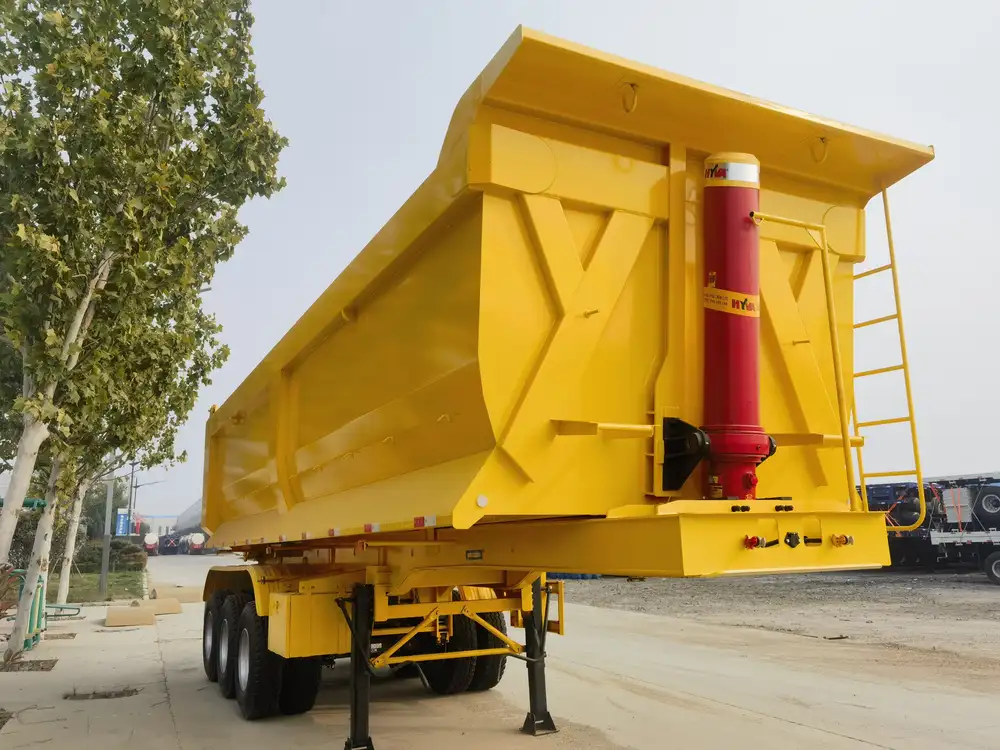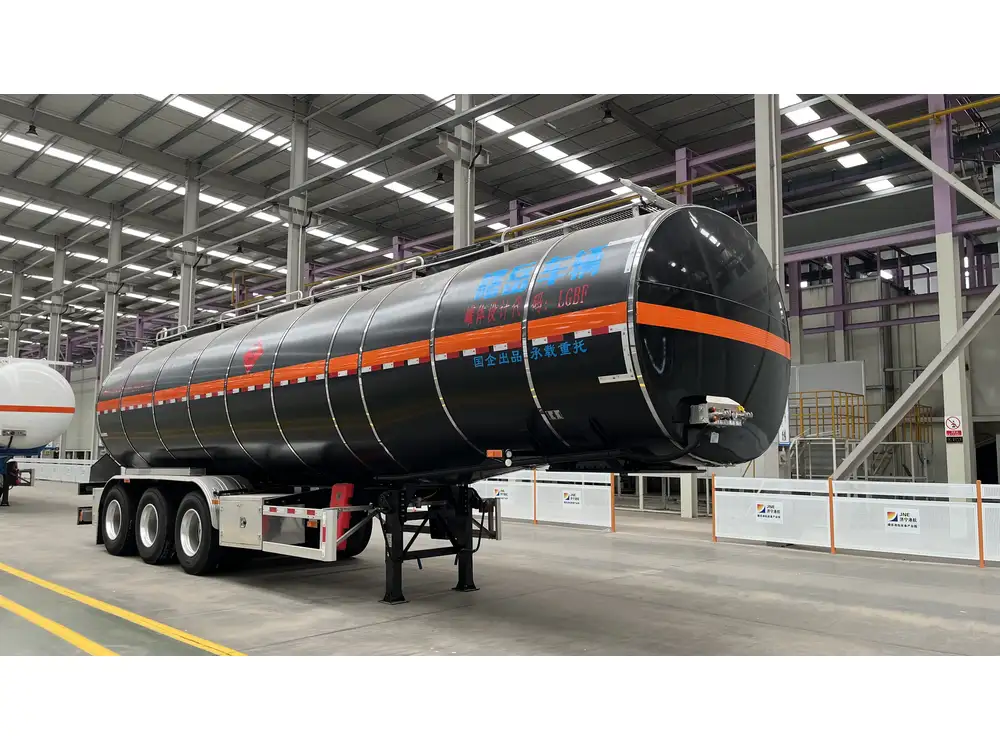Purchasing a semi-trailer is not merely a transaction. It’s an investment deeply intertwined with your logistics and operational strategies. Whether you’re a seasoned veteran in the freight industry or a newcomer, understanding the variables that determine the cost of a semi-trailer is crucial. In this comprehensive guide, we delve into the factors influencing semi-trailer prices, equipping you with the knowledge to make informed decisions.
The Basics: What is a Semi-Trailer?
A semi-trailer is a type of trailer that partially rests on the tractor unit, allowing for enhanced maneuverability and reduced weight. They are extensively used in the transport of goods over long distances, commonly classified into various types, including:
| Type of Semi-Trailer | Description | Typical Uses |
|---|---|---|
| Flatbed Trailers | Open trailers without sides or a roof. | Heavy machinery, lumber. |
| Refrigerated Trailers | Insulated trailers that maintain controlled temperatures. | Perishable goods, pharmaceuticals. |
| Dry Van Trailers | Enclosed trailers that protect cargo from elements. | General cargo. |
| Tanker Trailers | Trailers designed to transport liquids. | Fuel, chemicals. |
| Lowboy Trailers | Trailers with a low deck height for transporting heavy equipment. | Construction equipment. |
Understanding the type of semi-trailer that best serves your logistics needs is essential to determining costs effectively.
Factors Influencing Semi-Trailer Cost
When considering the acquisition of a semi-trailer, several key factors influence the final price. Here’s a detailed breakdown:

1. Type of Semi-Trailer
The base price varies significantly by the type of semi-trailer, as each has different structural requirements and materials. For instance, a flatbed may cost less than a refrigerated trailer due to the complexities involved in temperature control mechanisms.
Price Range Overview
| Semi-Trailer Type | Estimated Price Range |
|---|---|
| Flatbed Trailers | $15,000 – $40,000 |
| Refrigerated Trailers | $25,000 – $70,000 |
| Dry Van Trailers | $20,000 – $50,000 |
| Tanker Trailers | $30,000 – $100,000 |
| Lowboy Trailers | $30,000 – $75,000 |
2. Manufacturing Material
The material used to construct the semi-trailer can greatly impact its cost. Typically, semi-trailers are made from:
- Aluminum: Lightweight but generally more expensive; offers better fuel efficiency.
- Steel: Durable and heavier, usually less costly but may incur higher fuel consumption over time.
Choosing between durability, weight, and cost-effectiveness can be key in determining the right investment.

3. Custom Features and Specifications
Customization can escalate costs. The following features can affect the overall price:
- Load capacity requirements: Higher weight ratings require reinforced structures.
- Additional axles: More axles improve load distribution but add to the cost.
- Brake systems: Advanced braking systems, such as disc brakes rather than drum brakes, may increase initial costs.
4. Manufacturer Reputation
Established manufacturers often command higher prices due to brand reputation, quality assurance, and extensive warranty offerings. Investing in a reliable manufacturer may ultimately save costs by reducing maintenance and repair needs.
5. New vs. Used Trailers
Deciding between new and used semi-trailers can heavily influence your budget.
- New Trailers: Typically come with warranties, modern features, and optimized technology.
- Used Trailers: More affordable upfront but may involve hidden repair costs and potentially shorter operational lifespan.
It’s advisable to conduct thorough inspections and request maintenance histories if considering used units.

6. Market Trends and Seasonal Demand
The semi-trailer market is susceptible to fluctuations caused by factors like:
- Economic Conditions: During economic booms, prices may rise due to increased demand.
- Seasonal demands: Specific times of the year, like harvest seasons, can see a surge in demand, thus driving costs up.
Keeping track of these trends can provide insights into the best timing for purchasing.
7. Financing Options
Explore financing solutions that could affect your cash flow and overall cost. Various financing methods include:
- Leasing: Allows for lower upfront costs but ultimately means you will pay more in the long run.
- Loans: Buying outright with loans usually involves paying interest but can lead to long-term ownership benefits.
Total Cost of Ownership
Understanding the purchase price is vital, but so is the Total Cost of Ownership (TCO), which encompasses:
- Maintenance Costs: Regular servicing, tire replacements, and repairs.
- Insurance Premiums: Coverage requirements can differ based on trailer type and use.
- Fuel Efficiency: Determine the impact of trailer weight and aerodynamics on fuel consumption.
- Resale Value: Evaluate how the previous factors can impact depreciation and future resale opportunities.

Navigating the Purchasing Process
Equipped with knowledge about costs and factors, navigating the purchasing process becomes manageable. Here are key steps to consider:
A. Market Research
Conduct extensive research on various types of semi-trailers, comparing features, prices, and manufacturers. Utilizing online platforms and joining industry forums can yield insightful discussions and reviews.
B. Get Quotes
Contact multiple manufacturers or dealerships to obtain quotes. Ensure to specify your requirements, including trailer type, desired features, and anticipated weight capacity.

C. In-Person Inspections
Once you narrow down options, conduct physical inspections. Assess the build quality, materials used, and safety features. Bring along a trusted mechanic or a knowledgeable individual to better evaluate potential concerns.
D. Negotiate Terms
Don’t accept the first offer as final. Negotiate prices and financing terms. Explore options for warranties and after-sales services, which can significantly impact long-term satisfaction.
Conclusion
From understanding the different types of semi-trailers to evaluating the impact of materials and custom features, the cost of a semi-trailer is influenced by a myriad of factors. Awareness and research are your best allies in ensuring that you make a prudent investment.
Not only does comprehending your choices benefit short-term budgeting, but it also supports long-term operational efficiency. Our comprehensive guide serves as a foundational resource, helping you move ahead with confidence as you explore your semi-trailer acquisition options. With the right knowledge, you are better positioned to secure a vehicle that meets your operational demands while remaining financially sound.
By carefully considering each factor discussed, it ensures your investment in a semi-trailer is not just an initial purchase but a fundamental aspect of your logistics strategy. Take the time to weigh your options wisely, and optimize your purchasing process to align with your business objectives.



